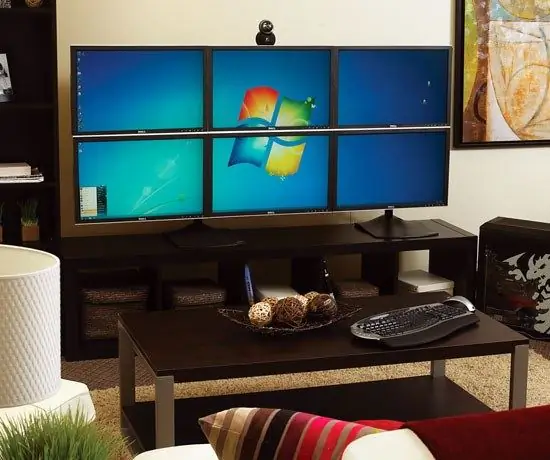Some people who actively use personal computers are sorely lacking the work area of one display. In such cases, it is recommended to connect a second monitor for synchronous use of the devices.

Necessary
Monitor connection cable
Instructions
Step 1
Choose a new display that you can connect to your graphics card. For simple image optimization for both displays, it is best to select a monitor that supports the resolution used by the first display. Pay attention to the refresh rate of the screen. When working with two displays, you will have to look at both monitors alternately. This can damage your eyesight.
Step 2
Make sure your graphics card supports dual channel operation. Typically, video adapters have two or three video outputs. Make sure you can connect your new monitor to your graphics card. Purchase an adapter such as DVI-VGA if needed. Connect the second display to the selected port of the video card using a standard cable and adapter. Turn on your computer and both monitors.
Step 3
After loading the operating system, configure the synchronous display settings. If you are using Windows Seven OS, then right-click, hovering over the desktop area. Select "Screen Resolution". In the menu that opens, click the "Find" button and wait while the system detects the second display.
Step 4
Now select the graphic image of the desired monitor and activate the "Make this screen main" function. Now select "Expand Screen". This will allow you to use both monitors independently of each other.
Step 5
If you run only an Internet browser and similar programs on the second monitor, then it is wiser to change the position of the display. Select the Portrait option and click Apply. Rotate the monitor 90 degrees clockwise and secure it. Adjust the position of the displays relative to each other. To move the running program to the area of another monitor, move the cursor outside the boundaries of the first screen.






